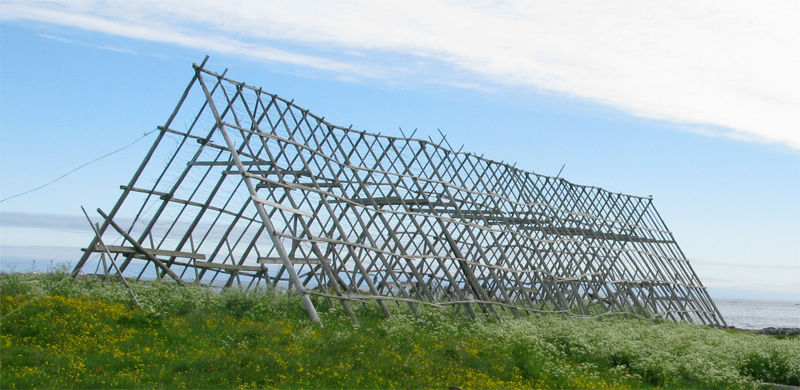The Brodtkorb family from Vardø ran fish factories (“bruk”) and stores in several towns and villages along the coast of Finnmark. They arrived in Gamvik in 1843, and had soon established a store and two factories. The Brodtkorbs were soon to become powerful «væreiere» (“owners of fishing villages”). As buyer of fish and seller of vital supplies, the “væreier” strongly influenced the economy of the local fisherman. Outside the peak fishing season, he had to buy his supplies on credit from the “væreier”. The debt was to be paid back during high season, but due to interest rates, fishermen were rarely capable of freeing themselves from debt. Thus, they were forced to deliver their fish to the same «væreier» every year, in order to be able to arrange supplies for the next season. This system of mutual dependency could last for generations.
As other buildings in Gamvik, “Brodtkorbbruket” was burned down as German troops withdrew from Finnmark during the autumn of 1944. The fishery was rebuilt between 1946 and 1957. Production was based on stockfish, salted fish, frozen fresh fish for export, and cod-liver oil. Due to the collapse in the international stockfish market, the fishery was closed down for good in 1969. In the mid-1980s, the municipality bought the fishery, and restoration began by the end of the decade. Some of the buildings were is such a bad condition that they had to be torn down and rebuilt, for example «Ishuset» (The Ice House). Between 1990 and 1995, buildings were partially restored and adapted for museum purposes. In 1998, Gamvik Museum could finally bring new life into the old fishery. During the winter of 2001/2002, a powerful storm caused the loss of some of the buildings and constructions that were part of the fishery.



